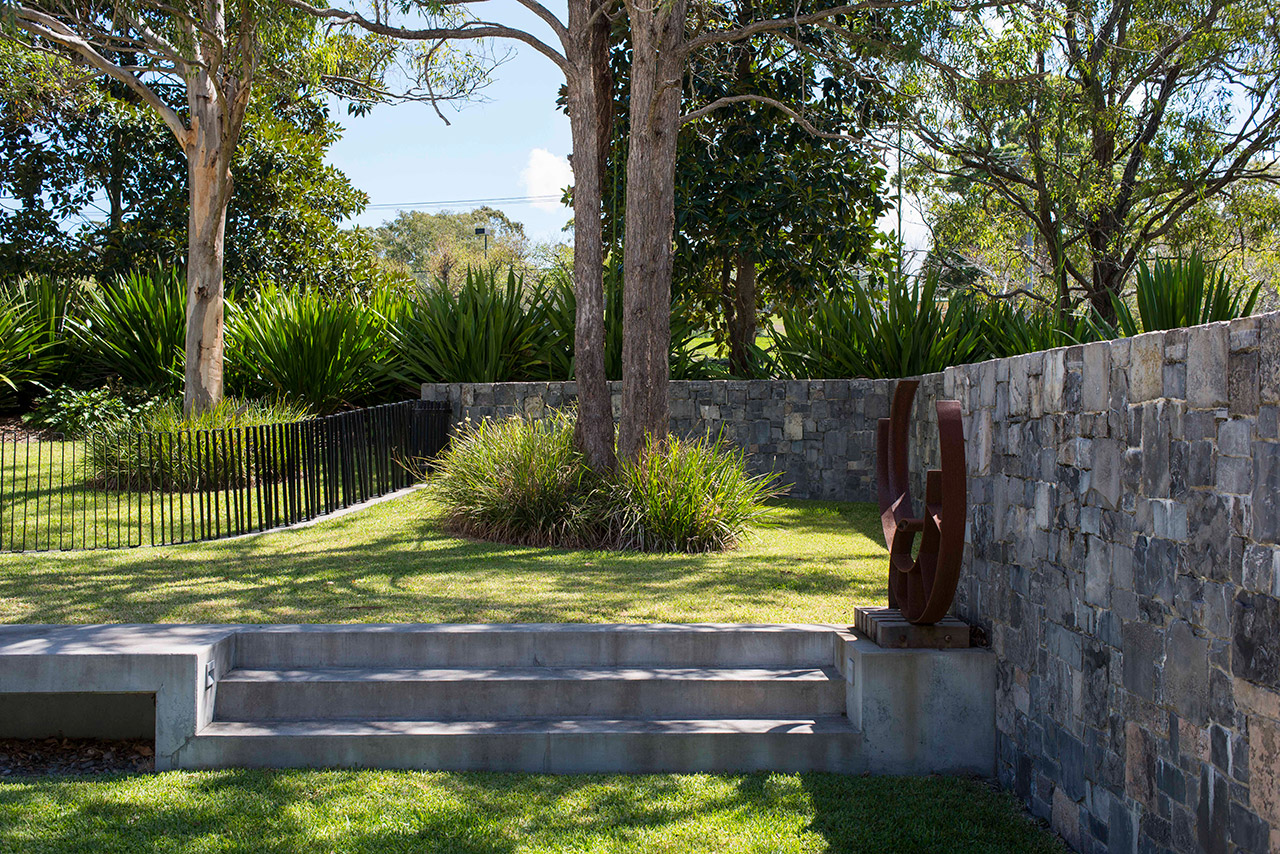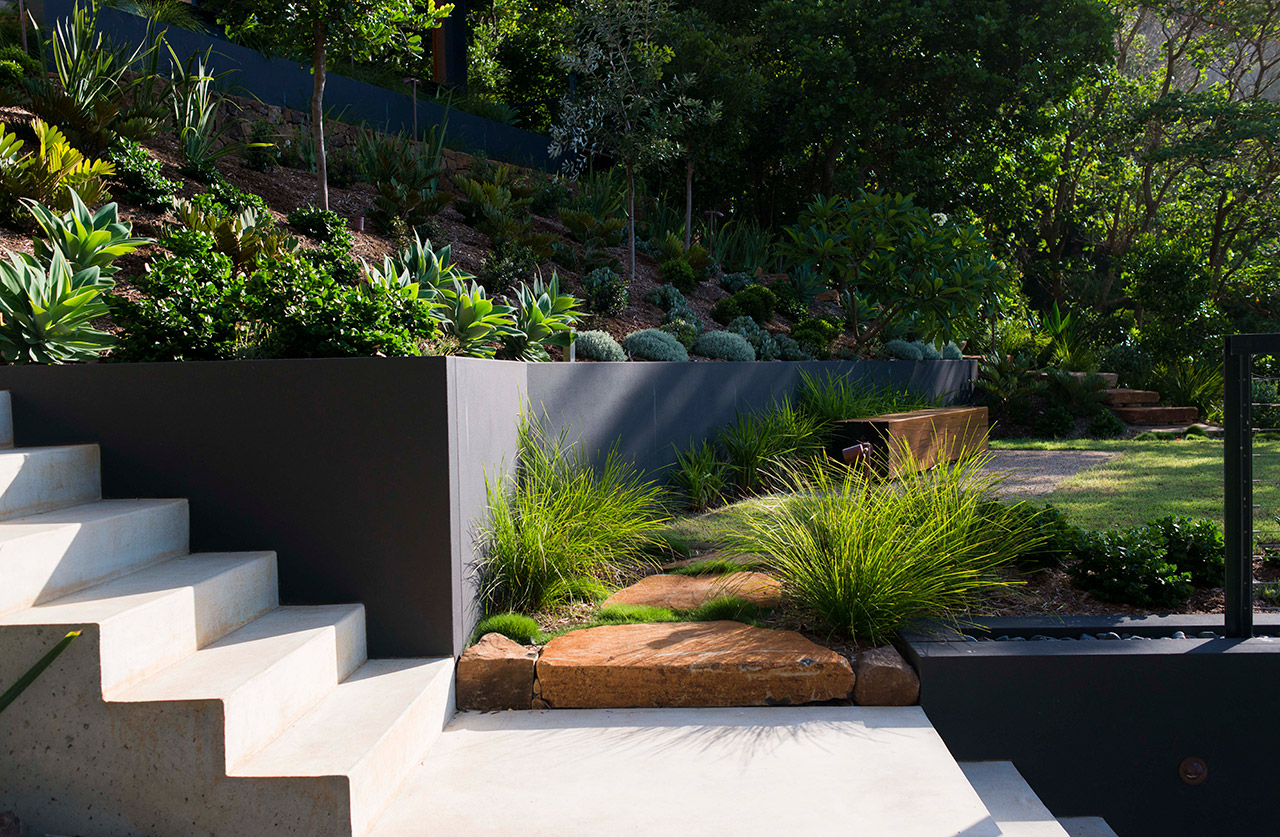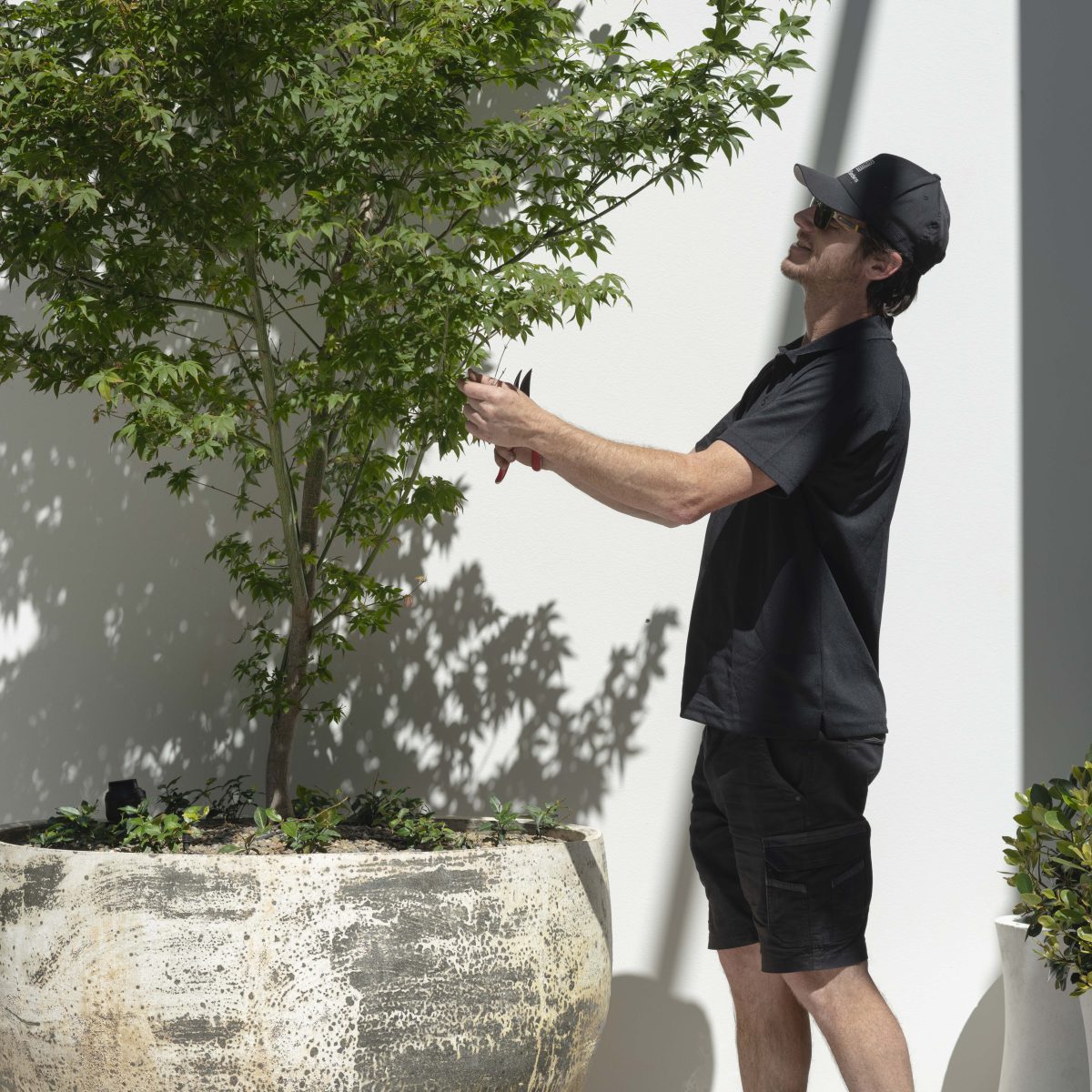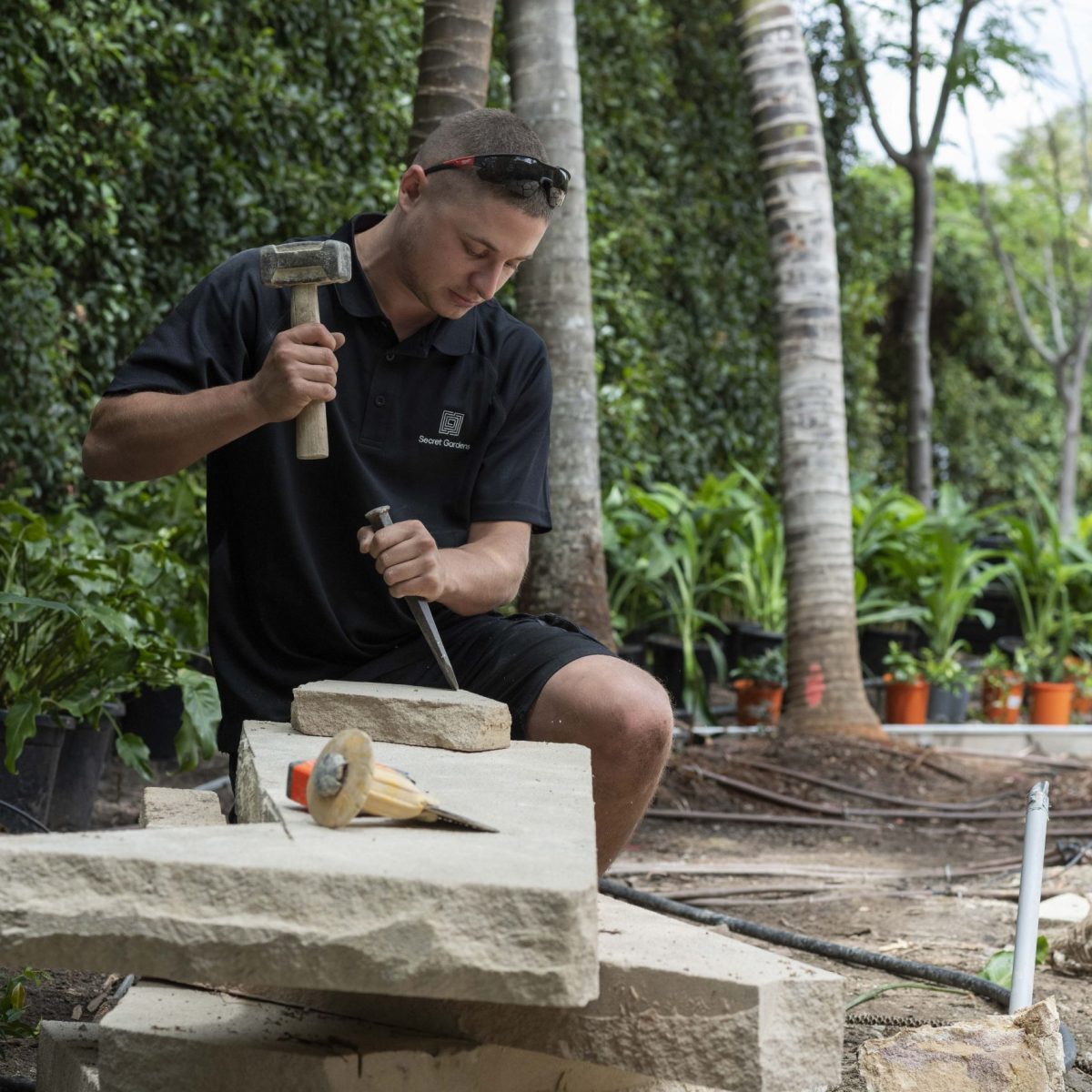Why do we love it?
Firstly, concrete is incredibly versatile; from square edges and geometric shapes to organic curves, concrete’s possibilities are limited only by the imagination – and the skill of your craftsperson.
From a design perspective, we love concrete for its simplicity and streamlined effect. For example, when using it to lay a floor – indoors or out – there are no joins, except for a few minimal and discreet structural joins. By contrast, other materials, such as tiles or timber, are much busier. Concrete allow the focus to remain on other features of the space, be it plantings or statement structures. Concrete also has a very natural feel and is, in our opinion, the most natural looking and feeling of all manmade materials.
One of the nicest things about concrete is the way it retains heat. After a short while in direct sunlight, the concrete will radiate warmth for quite some time, which is particularly lovely in winter.
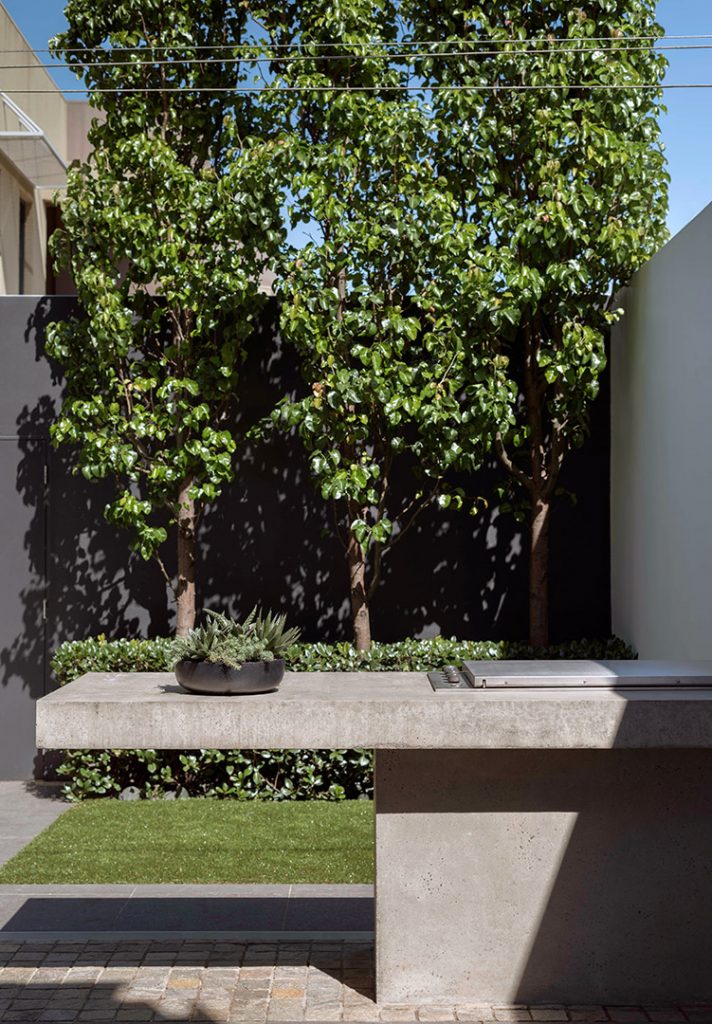
What are the drawbacks?
Though concrete itself isn’t an expensive material, installing it can hit the budget much harder than you might expect. It’s important to employ highly skilled craftspeople and have the job properly engineered, so you don’t end up riddled with fractures. After the slab has been laid, there’s still a lot more work to do; the slab will be given a light grind (the expensive equipment needed for this adds more to the bill) or a deeper one to expose the aggregate, depending on the look you want to achieve. Finally, the slab needs to be well sealed. This is a step you don’t want to skimp on, as the other drawback of concrete is it’s very porous and stains easily.
Concrete can also be very cold underfoot. While we love the way it retains and radiates heat, if it’s laid in a very dark, cool spot, it will stay uncomfortably chilly. In this case, a warmer material like timber is probably a better bet.
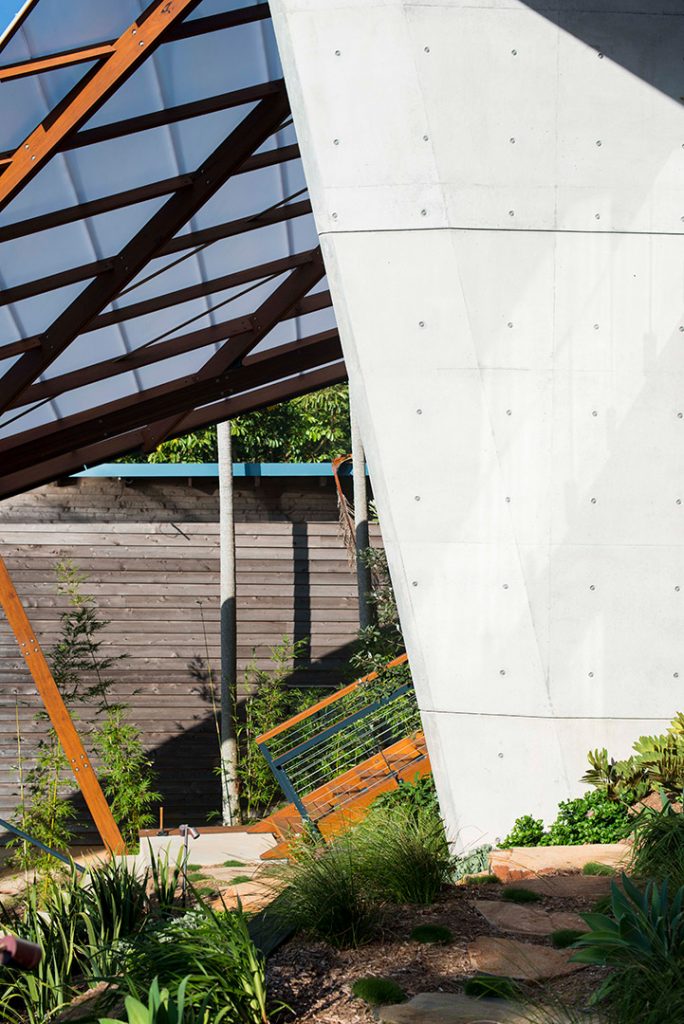
Where do we use it?
Concrete can be applied to virtually all surfaces, from walls to floors and everything in between. We love to use it as a flooring material and for benchtops and seating.
It’s a fantastic material for stepping stones. If you want large steppers, which we often do, concrete allows each one to be a smooth and seamless plain, as opposed to using a grouping of several tiles or bricks for each step.
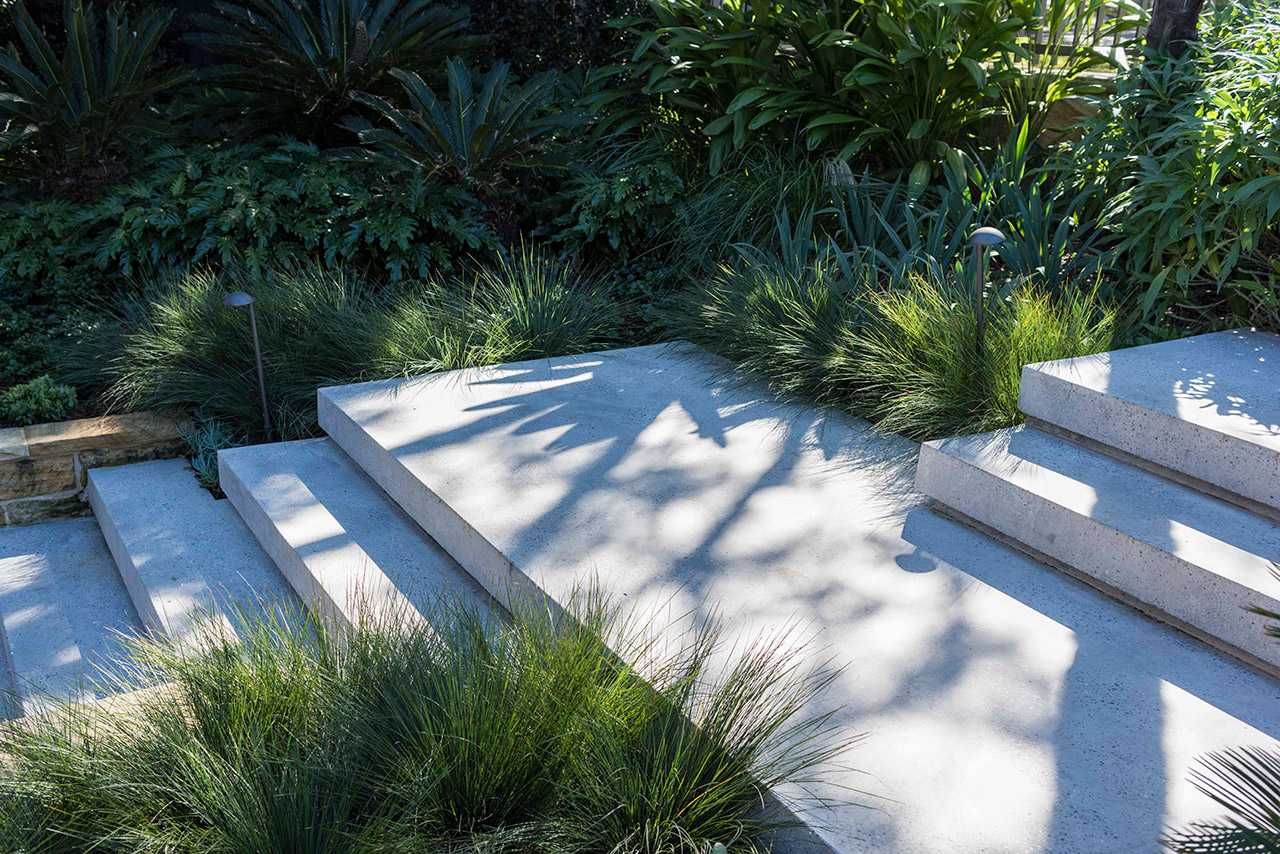
Concrete marries beautifully with natural materials such as timber; if we’ve laid a concrete floor, we’ll often team it with a timber screen, cabinetry or pergola framework, which balances the concrete and lends it warmth. Similarly, the concrete is beautiful paired with plantings, the simplicity of the surface letting the layered foliage really sing in the space.
